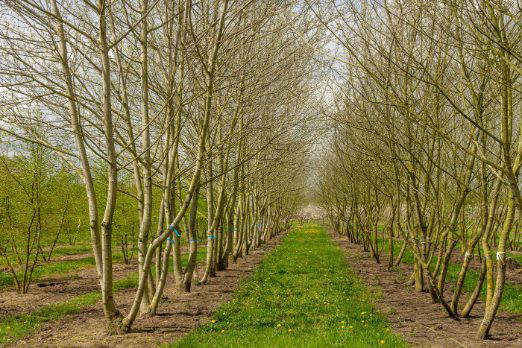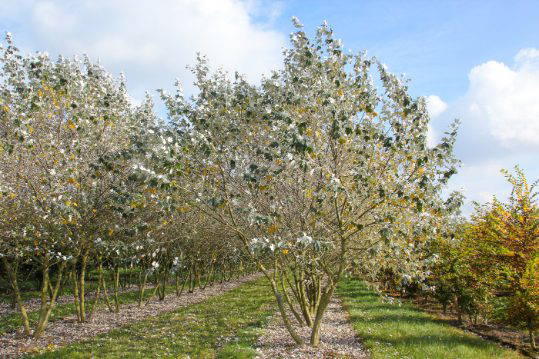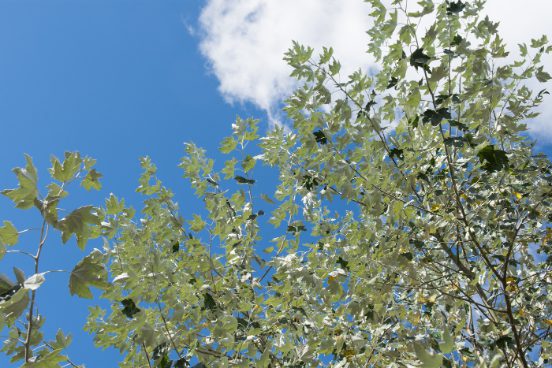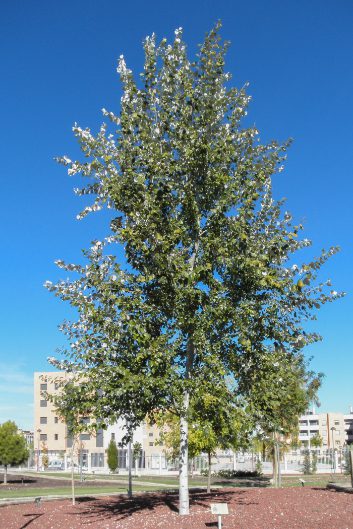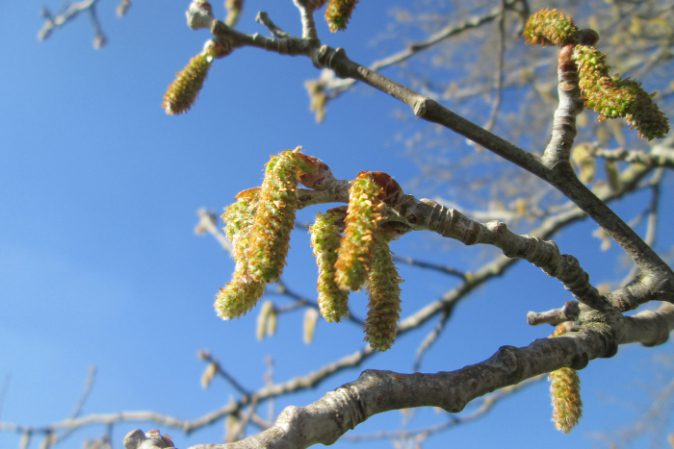Populus alba | White Poplar
The Populus alba is native to central and southern Europe, Morocco and the Iberian Peninsula, but naturalised in the UK many centuries ago. This is a medium to large tree, very fast-growing with a broad, rounded crown. It has rounded, lobed leaves with an irregular-toothed edge, dark green on top, white and downy underneath. Young shoots and leaves are also completely white and hairy, creating an interesting white look, hence the common name White Poplar. In spring the Populus alba has red, male catkins and yellow-green female catkins. The female catkins develop into white fluffy, cotton-like seeds that fall in late summer creating quite a spectacle; it is no wonder the tree is also called ‘Abele’, which means white. Like all Poplar trees the Populus alba will thrive in most soil and tolerates wet, water-logged ground, salt air, wind and exposure so can be grown in coastal areas as a useful windbreak. The Populus alba will even grow in sand dunes.
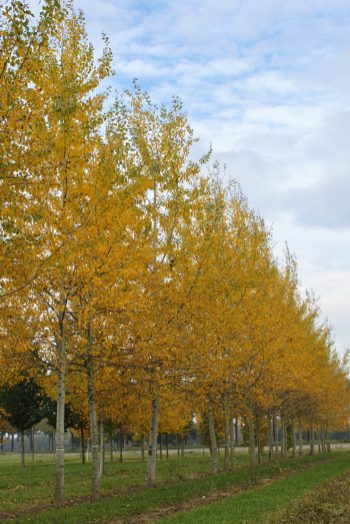
The white poplar has historically been used in medicine. The bark has astringent, antiseptic and anti-inflammatory properties. Taken internally it was used to treat many complaints including rheumatism and digestive problems, lower back pain and gout. Externally, the bark was made into a poultice to treat infected wounds, haemorrhoids and chilblains. Nowadays, the leaves are used to treat tooth decay. Most earlier Italian Renaissance artists painted on poplar panels. We still have one of the most famous painting in the wold; the Mona Lisa.

